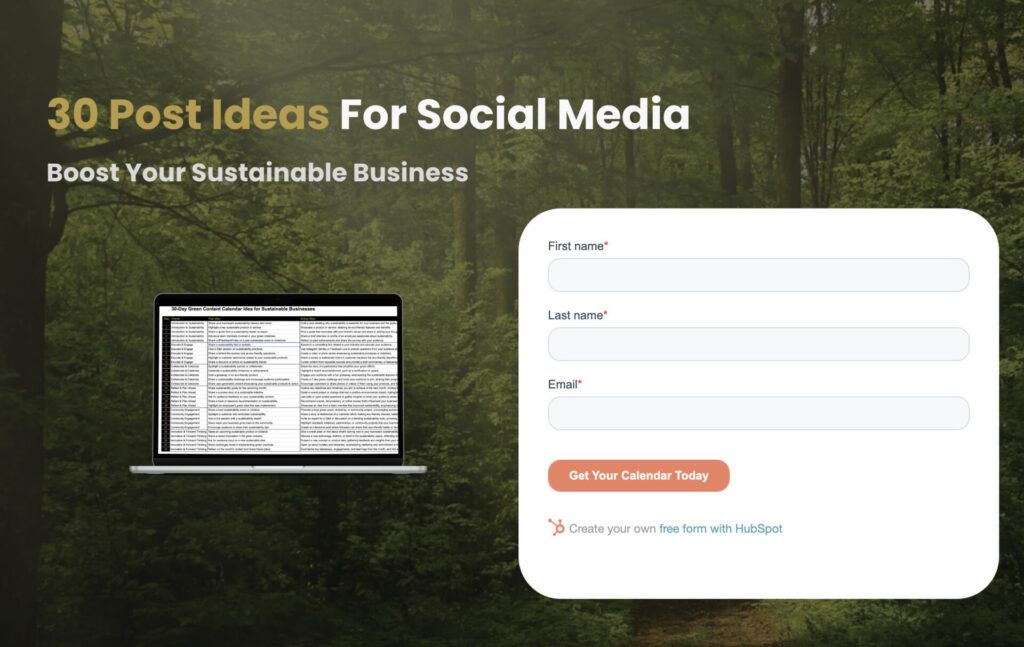
10 Common SEO Mistakes to Avoid & Amplify Your Success
Navigating the intricate world of digital marketing, one quickly realizes that SEO mistakes can be the silent saboteurs of an otherwise robust strategy. In the vast realm of online business, Search Engine Optimization (SEO) stands as a beacon, guiding websites towards the coveted top spots of search results and ensuring they capture the attention of potential customers. Yet, the journey to SEO excellence is riddled with potential pitfalls. From minor oversights to major blunders, these errors can significantly hinder a brand’s online visibility, undermining months, if not years, of hard work. This article aims to illuminate eleven of the most common SEO mistakes, offering insights and solutions to ensure your digital presence remains strong and impactful.
Table of Contents
Blog Newsletter
The Importance of Avoiding SEO Mistakes
Every digital marketer understands the significance of SEO. It’s not just about driving traffic; it’s about attracting the right traffic. Quality SEO ensures that your website is visible to those who are genuinely interested in your offerings. But even minor oversights can have major consequences, pushing your site down in rankings, reducing visibility, and ultimately affecting your bottom line.
The 11 Common SEO Mistakes
Neglecting Mobile Optimization
In our digital age, over half of global internet traffic comes from mobile devices. Yet, many businesses lag in optimizing their websites for mobile use. When potential customers encounter a site that’s hard to navigate on their smartphone, they’re likely to leave, resulting in lost opportunities. Beyond user experience, search engines prioritize mobile-friendly sites, meaning a non-optimized site can suffer in rankings.
To address this, it’s essential to ensure your website is responsive, adjusting to various screen sizes seamlessly. Optimize media for quick loading, streamline navigation, and regularly test on different devices. By enhancing mobile optimization, you improve user experience and boost your site’s search engine standing.
Ignoring Local SEO
Local SEO is a game-changer for businesses that cater to specific geographic areas. Despite its significance, many companies overlook its potential. When users search for services “near me” or specify a location, they’re often ready to engage or make a purchase. Without local SEO, your business might miss out on these high-intent queries.
To harness the power of local SEO, it’s crucial to claim and optimize your Google My Business listing. This ensures your business appears in local search results and on Google Maps. Encourage satisfied customers to leave positive reviews and ensure your business’s Name, Address, and Phone Number (NAP) are consistent across all online platforms. By prioritizing local SEO, you position your business to capture local traffic, drive footfall, and increase conversions.
Overlooking Image Optimization
Images play a pivotal role in enhancing user experience, but they can also be culprits in slowing down your website. Many businesses underestimate the impact of unoptimized images on page load times and overall SEO. Slow-loading pages can deter visitors and negatively affect search engine rankings.
To counter this, it’s essential to compress images without sacrificing quality. Tools like TinyPNG or Compressor.io can be invaluable. Additionally, always use relevant file names and alt tags for images, as they provide context to search engines and improve accessibility. By optimizing images, you ensure faster page loads, enhanced user experience, and better SEO performance.
Not Using HTTPS
Security is a cornerstone of any reputable online presence. Websites without HTTPS encryption risk data breaches and can quickly lose visitor trust. Moreover, search engines, particularly Google, prioritize secure sites, making HTTPS essential for optimal SEO rankings.
Adopting HTTPS is about more than just security; it’s a trust signal. When users see the padlock symbol in their browser, their confidence in your site increases. Secure your website with an SSL certificate and ensure its proper implementation. By transitioning to HTTPS, you enhance site security, foster user trust, and boost your SEO performance.
Duplicate Content
Duplicate content can be a silent drain on your website’s SEO potential. When search engines encounter identical content across multiple pages, it becomes challenging to determine which version is more relevant. This can dilute the visibility of your content and lead to lower rankings.
It’s not always intentional; sometimes, technical issues or CMS quirks can generate duplicate pages. However, the impact remains detrimental. Utilize tools like Siteliner or Copyscape to identify and address duplicate content on your site. Implementing canonical tags can also guide search engines to the preferred version of a page. By actively managing and eliminating duplicate content, you ensure each page on your site holds unique value, maximizing your SEO efforts.
Poor Keyword Research
Keyword research is the foundation of any successful SEO strategy. Yet, many businesses fall into the trap of targeting generic or highly competitive keywords, missing out on niche opportunities that could drive valuable traffic.
Choosing the wrong keywords means your content might not reach its intended audience. It’s essential to understand what your potential customers are searching for and tailor your content accordingly. Tools like Google’s Keyword Planner or SEMrush can provide insights into search volume and competition.
Beyond just volume, consider the intent behind keywords. Are users looking for information, or are they ready to purchase? By aligning your content with the right keywords and user intent, you position your website to attract more relevant traffic, leading to better engagement and conversions.
Ignoring Meta Descriptions
Meta descriptions serve as the concise summaries that appear beneath website titles in search results. While they might seem minor, they play a crucial role in influencing a user’s decision to click on a link. Overlooking or poorly crafting these descriptions can result in missed opportunities to draw in potential visitors.
A compelling meta description acts as a mini-advertisement for your page. It should concisely convey the content’s value, encouraging users to explore further. While search engines don’t directly use meta descriptions for ranking, a higher click-through rate resulting from an enticing description can positively impact SEO.
Ensure each page on your site has a unique and relevant meta description. Keep it within the recommended length of 150-160 characters and incorporate primary keywords naturally. By giving meta descriptions the attention they deserve, you enhance user experience and potentially boost your site’s visibility.
Not Updating Old Content
Content is a dynamic asset, and what was relevant a year ago might not hold the same value today. Many businesses make the mistake of neglecting older content, focusing solely on producing new material. However, outdated or inaccurate information can diminish a site’s credibility and affect its SEO performance.
Search engines prioritize fresh, relevant content. By revisiting and updating older articles or posts, you can breathe new life into them, making them more appealing to both users and search engines. This could involve updating statistics, adding new insights, or even reformatting for better readability.
Regular content audits can help identify pieces that need updating. By keeping all content—old and new—accurate and current, you ensure your website remains a trusted resource for visitors and maintains a strong SEO standing.
Overlooking Site Speed
Site speed is more than just a convenience factor; it’s a critical component of user experience and SEO. In a world where instant gratification is the norm, a slow-loading website can quickly deter potential visitors, leading to higher bounce rates and lost opportunities.
Search engines, especially Google, factor in site speed when determining rankings. A sluggish site can hinder your SEO efforts, pushing your content further down in search results. Beyond rankings, a fast-loading site enhances user engagement, potentially leading to longer visits and more conversions.
To optimize site speed, consider compressing images, leveraging browser caching, and minimizing code. Tools like Google’s PageSpeed Insights can provide actionable recommendations to improve load times. By prioritizing site speed, you not only enhance user experience but also bolster your website’s SEO performance.
Neglecting Internal Linking
Internal linking is a powerful yet often overlooked SEO strategy. By creating links between different pages on your website, you guide visitors through a journey, increasing the chances of them spending more time exploring your content. Moreover, it helps distribute page authority and establishes a hierarchy, making it easier for search engines to crawl and understand your site’s structure.
Without a robust internal linking strategy, valuable content might remain hidden from both users and search engines. It can lead to missed opportunities for engagement and lower rankings for pages that could otherwise perform well.
To harness the benefits of internal linking, ensure that relevant content is interlinked. For instance, a blog post on a particular topic could link to a related service page or another in-depth article. Use descriptive anchor text that provides context, and avoid overloading pages with excessive links. By integrating a thoughtful internal linking strategy, you enhance user navigation, boost page views, and strengthen your site’s SEO foundation.
Join our community and stay up-to-date with the latest sustainable & marketing practices.
Charting Your Path to SEO Mastery
In the ever-evolving world of digital marketing, SEO stands as a beacon, guiding businesses to online prominence. Throughout this article, we’ve unveiled the common SEO mistakes that can hinder your SEO efforts and the proactive strategies that can set you apart. From the nuances of keyword research to the significance of user experience, each element plays a pivotal role in your digital journey.
Imagine a digital presence where your content consistently ranks high, attracting a steady stream of organic traffic. By sidestepping these pitfalls and embracing the strategies discussed, such a reality is within your grasp. Don’t let common mistakes derail your SEO ambitions. Take the insights from this article to heart, implement them, and watch as your online visibility soars. Remember, with the right knowledge and tools, success in SEO is just around the corner.
Ready to Uncover Your SEO Potential?
Navigating the complexities of SEO can be challenging, but you don’t have to do it alone. Let us provide clarity. Dive into our FREE SEO audit questionnaire. Our team of experts will analyze your responses and offer insights into areas of improvement, highlighting where you should focus your attention. Don’t leave your SEO to chance; let’s uncover the opportunities waiting for you.


